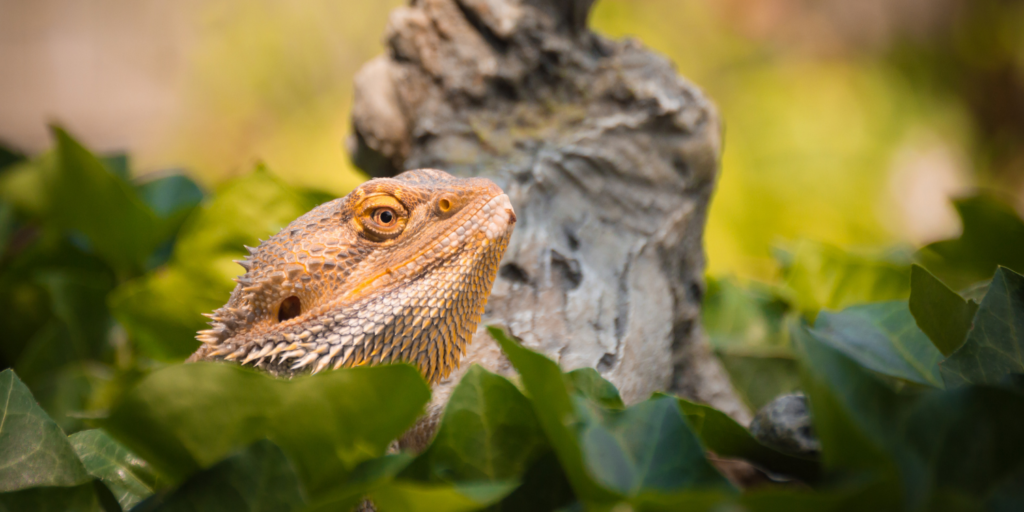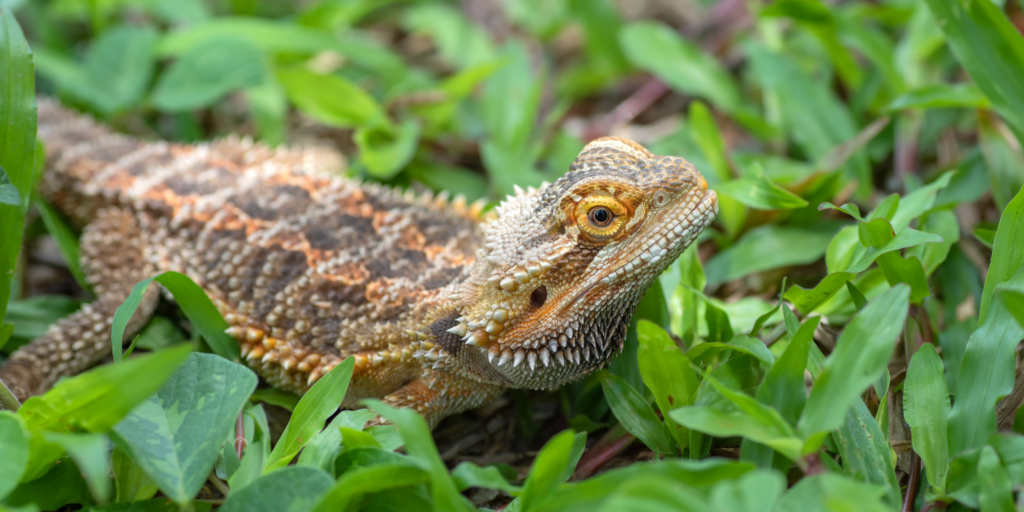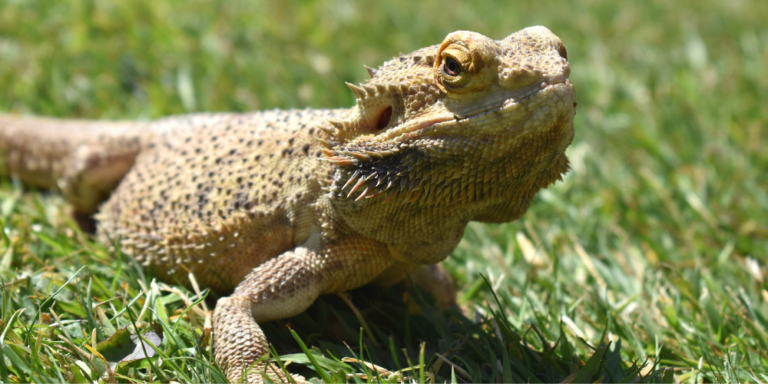Bearded dragons make great pets but how to tame a bearded dragon? We’ll discuss it in this article!
Bearded dragons are relatively low-maintenance and are generally very docile creatures. However, they can sometimes be skittish or easily startled, so it is important to handle them with care.
Another Interesting Read: How To Tell If Your Bearded Dragon Likes You?
There are a few things you can do to help your bearded dragon feel more comfortable around you and tame them.
Spend Time Around them Every Day
The more time you spend around your bearded dragon, the more comfortable they will become with you. Try to sit near their enclosure for a little while each day, and offer them food from your hand. Once they start getting used to your presence, you can begin gently petting them.
Bearded dragons are social creatures that love to spend time with pet owners. If you want your bearded dragon to be happy and healthy, it’s important to spend time around them every day. This means taking them out of their enclosure for at least an hour each day so they can explore and play.
It’s also important to interact with them during this time, whether it’s playing with them or simply talking softly to them. Bearded dragons are intelligent creatures that love to learn, so the more you interact with them, the happier they’ll be.
Handle Your Bearded Dragon Frequently
Bearded dragons should be handled often so that they get used to being picked up and held. Start by gently scooping them up in your hands and holding them for a few minutes at a time. You can also try offering them food while you are holding them, as this will help to create a positive association.
Most bearded dragons enjoy being petted and will often fall asleep on their owner’s lap. However, it is important to remember that they are still wild animals and should be treated as such.
One important part of keeping your pet bearded dragon healthy and happy is handling them frequently. This helps them get used to you and your presence, making them less likely to be scared or anxious when you need to take them out for medical appointments or clean their enclosure.
Here are some tips on how to handle your bearded dragon properly:
-Wash your hands before and after handling your bearded dragon. This helps to prevent the spread of bacteria and other potential contaminants.
-Support their body from underneath. Bearded dragons are fragile creatures, so it’s important to support their entire body when picking them up. Place one hand underneath their chest and another under their abdomen.
-Be gentle. Avoid sudden movements or jerking them around, as this can injure them.
-Talk to them. Some owners find that talking calmly to their bearded dragon helps to keep them calm during handling.

Go Slowly and be Gentle
When handling your bearded dragon, it is important to go slowly and be gentle. Avoid sudden movements or loud noises, as these can startle them. If they seem nervous or stressed, give them a break and try again later.
It can be easy to get caught up in the excitement of a new relationship and want to move too fast. But it’s important to go slowly and be gentle with yourself and your partner. Rushing things can lead to disappointment or even heartbreak.
Take the time to get to know each other. Don’t rush into anything physical. Enjoy the process of getting to know someone new. Go at a pace that feels comfortable for both of you.
Reward Good Behavior
Whenever your bearded dragon does something you like, such as being calm or staying still, be sure to give them a treat. This could be a special food item, or simply some extra attention. Positive reinforcement will help to train your bearded dragon and let them know that they are behaving in the way you want them to.
If your bearded dragon isn’t behaving the way you want them to, it’s important not to punish them. Bearded dragons are very sensitive creatures, and punishment can make them scared or stressed. Instead, try to redirect their behavior with a toy or food item.
For example, if they are biting you, offer them a piece of vegetables to chew on instead. With time and patience, you can train your bearded dragon to behave the way you want them to.
Taming bearded dragons: Start by offering food by hand to get your dragon used to being around you. Once your baby beardie is comfortable eating from your hand, you can begin gently petting it. While Taming bearded dragons, with time and patience, your baby dragon will learn to trust and enjoy being around you!
What is the Best Way to Tame a Bearded Dragon?
There are a few things you can do to help tame your bearded dragon. First, make sure to handle them regularly so they get used to being around people. You can also try offering them food from your hand to get them used to be close to you.
Finally, avoid making sudden movements or loud noises around them so as not to scare them. With time and patience, your bearded dragon should start to warm up to you and become more tame.

How Can You Tell If a Bearded Dragon is Tame?
There are a few things you can look for to tell if your bearded dragon is tame. If your adult bearded dragon is comfortable being held and doesn’t try to squirm away, that’s a good sign. Another good sign is if your dragon lets you pet it without trying to bite or scratch.
If your bearded dragon seems relaxed around you, that’s another good indication that it’s tame. If you’re not sure, ask your veterinarian or a bearded dragon expert for help in determining if your dragon is tame.
What Are Some Good Rewards for Taming a Bearded Dragon?
Dragons are intelligent and social reptiles that make great pets. One of the keys to a happy, healthy bearded dragon is taming. Taming allows you to develop a bond with your reptile friend and helps make handling and vet visits less stressful.
Some good rewards for taming baby bearded dragons include offering food, petting or scratching the dragon in its favorite spot, and providing new and interesting toys or objects to explore.
Bearded dragons typically enjoy being handled and will often seek out attention from their owners. By providing positive reinforcement in the form of rewards, you can help your baby bearded dragon become more comfortable with being handled and tame.
If you are looking for ways to bond with your dragon and ensure its happiness and health, consider offering some of these rewards for a job well done during taming sessions.

Conclusion – How to Tame a Bearded Dragon
One of the best ways to tame a bearded dragon is by offering it food rewards. Dragons are highly food motivated, so offering them their favorite foods as a reward for good behavior is an effective way to tame them.
Taming a bearded dragon takes time, patience, and positive reinforcement. By handling your Dragon regularly, offering food rewards, and providing new toys and objects to explore, you can help your dragon become more comfortable with people and develop a strong bond with you.
You Might Also Like:
How To Decorate A Bearded Dragon Cage

